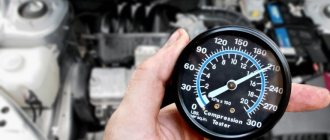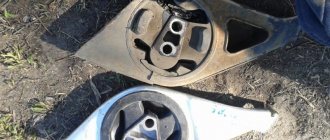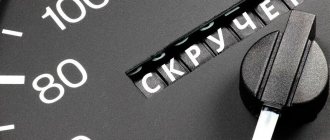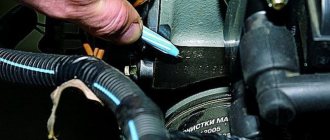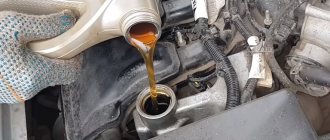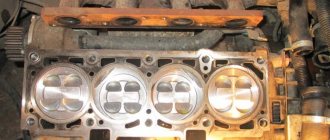It has long been known that each internal combustion engine has its own “safety margin”. It is also no secret that foreign car engines have a longer service life than products of the domestic automobile industry. This is due to the better quality of parts, more modern technologies in their manufacture, as well as the accuracy of assembly and tuning of the internal combustion engine.
If we talk about VAZ engines of different generations, it is worth noting that there is no exact data, that is, in each case, the mileage before overhaul can vary greatly. Next, we will look at how long such engines last on average, as well as what affects the service life of these power units.
How much does it cost to overhaul an engine on a Priora?
Prices for repair of LADA engines of all models
| COST ENGINE REPAIR : | VAZ 2108-2112, PRIORA , KALINA/GRANT, VESTA |
| MAIN REPAIR OF 8KL ICE | from 14400 rub. |
| MAJOR REPAIR OF 16KL ICE | from 19275 rub. |
| ADJUSTING VALVES 8KL | from 1275 rub. |
| REPLACING THE WATER PUMP | from 2070 rub. |
VAZ engine: engine life and what it depends on
So, let’s immediately note that the average indicator for VAZ engines on the “classic” is the mark of 150 thousand km. mileage As for more modern versions of internal combustion engines, you can often hear that such engines “run” about 200 thousand km. and even more, but the plant itself determines the same 150 thousand.
As you can see, the official indicators can be considered conditional. First of all, the life of the engine greatly depends on a number of nuances during the maintenance and operation of the vehicle. For example, let's take the VAZ-2114 engine.
Let's start with the fact that the engine in this model is 8-valve and has a factory declared resource of 150 thousand km. Moreover, in practice, in some cases such units reach the capital only after 200-250 thousand km. Motors with 16 valves can go even more (up to 300 thousand).
As mentioned above, it is important to understand that the resource is greatly influenced by the quality of fuel, engine oil, operating conditions and driving style practiced by the driver, as well as the quick elimination of “in-line” breakdowns that arise. Let's look at these factors in more detail.
- First of all, the service life of the engine directly depends on the driving style and the conditions in which the vehicle is operated. In other words, if you constantly rev the engine to high speeds and delay upshifting, accelerate aggressively from a stop, etc., then the life of the engine is greatly reduced.
Driving at low speeds is also harmful to the engine, when, for example, the driver drives in 5th gear at a speed of 40-50 km/h. In this case, the load increases greatly if, for example, the car is going uphill, but instead of engaging a lower gear, the driver simply presses the gas harder. Often in this case, engine detonation occurs, which destroys the engine.
In both the first and second cases, the engine is guaranteed increased and accelerated wear. Taking into account the above, it becomes clear that a quiet ride without sudden starts and high speeds is considered optimal, while it is also not advisable to allow the speed to drop below 2 thousand rpm. in every gear while driving.
As for operating conditions, towing other cars or using a trailer, as well as constant driving within the city at low speed (start-stop mode), frequent engine starts (especially cold) and stops, short trips during which the internal combustion engine does not have time to reach operating conditions temperature, driving on dusty roads or operating the vehicle in difficult conditions also reduces the life of the engine. This is especially true if the engine is not serviced in a timely manner, adjusted for such conditions.
- The next factor that can both shorten and extend the “life” of an internal combustion engine is maintenance. Such maintenance should be understood as the planned replacement of technical fluids and consumables.
First of all, the engine oil and oil filter play a key role. The fact is that lubricant protects the motor from wear, removes by-products and deposits, cools loaded friction pairs, etc. At the same time, the oil itself also has a limited service life, and the service life of the lubricating fluid is actively influenced by the same operating conditions and a number of other nuances.
This means that the oil must be selected correctly and changed before the lubricating fluid loses its properties. Experienced drivers also know well that it is better to change the oil not according to mileage, but according to engine hours, and also make allowances for the conditions in which the car is operated.
We also recommend reading the article about what engine speed is best to drive at. From this article you will learn about operating conditions that can reduce wear and maximize the life of the engine and other vehicle components.
In practice, it turns out that as part of normal everyday use, it is optimal to change semi-synthetics no later than 6-7 thousand km. mileage, and it is better to replace synthetics at 9-10 thousand km. This recommendation is the main answer to the question of how to increase the life of the motor. If the owner follows the above recommendations, then the VAZ engine may well last about 250 thousand km. before major repairs.
We also note that for many VAZ models, engine maintenance is not limited to just changing the oil, oil and air filter. Consumables that need to be changed also include spark plugs and high-voltage wires, antifreeze/antifreeze to maintain the optimal operating temperature of the internal combustion engine. It may also be necessary to adjust the thermal clearances of the valves, set the OZ, replace the timing belt and rollers, clean the injector and other procedures.
- Timely troubleshooting completes the list of those factors that can increase the service life of a VAZ engine or any other internal combustion engine. The reason is obvious, since even a minor breakdown, which at the initial stage does not pose a threat, if ignored and continued operation of the vehicle, can develop into a serious problem.
For example, such malfunctions include problems with the thermostat and driving on a cold engine when the temperature gauge does not rise, local engine overheating due to problems with spark plugs or ignition, dirty injection nozzles, increased oil consumption as a result of faulty valve stem seals, leaking oil seals and gaskets, etc.
It becomes clear that the normal operation of all main systems and processes (ignition, cooling, power supply and mixture formation) will allow for complete combustion of the mixture of fuel and air in the cylinders, avoid engine sticking, and slow down the process of oxidation and aging of the engine oil.
Engine maintenance
Maintenance and repair of the Kalina engine is quite simple, since all power units have simple design features. With timely oil changes, the engine life can reach 300,000 km. So, let's consider what and how much oil is needed in the Lada Kalina engine, as well as the replacement process itself.
Changing the engine oil
The process of changing engine oil is quite simple. A minimum amount of tools and time will be required. Let's consider the process of changing engine oil in an engine:
- We place the car on a pit or a lift.
- Remove the negative terminal from the battery.
- Remove the engine crankcase protection.
- Unscrew the drain plug and wait for the oil to run out. Then you need to tighten the drain plug.
- Unscrew the filler neck and pour in engine oil.
- We change the oil filter.
- Fill the required amount, tighten the filler neck and start the engine.
- After the engine has run for 5-7 minutes, check the oil level in the engine.
Many car enthusiasts are wondering how much oil should be poured into Kalina power units. So, according to the service manuals and repair manuals, 3.5 liters of motor fluid fit into the Kalina engine.
Are the valves bending?
In Lada Priora cars, even in a 16-valve 126 power unit, valves can often bend. The reasons causing this defect lie in non-compliance with operating rules, in case of violation of the regulations for replacing the following components and parts:
- rollers;
- timing belt;
- water pump.
If one of the listed components breaks down, the pistons, exerting mechanical stress on the valves, can bend them. The design features of the engine are the reasons why the engine can bend valves. Deformation of the valves necessitates a major overhaul of the Priora engine.
To avoid this defect, the car owner needs to timely check the timing elements. Of particular importance is the belt, which is subject to thorough inspection after 50 thousand kilometers. When checking, the following faults are excluded:
The rollers and timing pump 126 must also be inspected, because The motor bends the valves even when they malfunction.
Signs of wear on the belt and other timing components are vibrations and an unpleasant grinding noise in the engine compartment. In this case, it is necessary to urgently repair or replace the broken elements to avoid deformation of the engine valves.
If you get defective parts
At any mileage, cylinder scuffing is possible, caused by destruction of the piston, rings, or breakage of the spark plug (an electrode or a piece of insulator has broken off). Scuffing on the cylinder surface causes loss of compression, which reduces power and causes oil burn.
This is what the combustion chambers of an engine with a strong oil burn look like.
This is what the combustion chambers of an engine with a strong oil burn look like.
If you come across fake filters or oils, the life of the engine can be very short. At high speed and rpm, the filter can burst along the rolling line, leaving the engine without oil. And simply poor filtration will reduce the life of the bearings of all shafts. Substandard oil can cause scuffing, and it can also burn so intensely that the driver can easily miss the moment when the engine is left without oil.
I advise you to purchase filters at large online spare parts stores. The likelihood of buying a fake is much lower. It is better to buy oils at well-known chain gas stations.
Expert commentary
Victor Lelikov,
employee :
Spare parts for VAZ engines are in good demand. This is why there is such a high proportion of substandard spare parts on sale. Such parts come from three sources. The first is cooperative spare parts: their use is especially dangerous. For example, the service life of timing belts can be only a few tens of engine hours. The second source is still encountered defects from the official supplier. This is a spare part that did not pass VAZ technical control, but went on sale. Such parts and components destroy buyers’ faith in the reliability of VAZ cars. Finally, the third source is remanufactured engine parts. But these are becoming less and less common.
How long does my Lada last without major repairs - an expert opinion
Specifications
| Manufacturer | Concern "AvtoVAZ" |
| Start year of release | 2016 |
| Volume, cm³ | 1774 |
| Power, l. With | 122-145 |
| Torque, Nm | 170-184 |
| Compression ratio | 10.3 |
| Cylinder block | cast iron |
| Number of cylinders | 4 |
| Fuel injection order | 1-3-4-2 |
| cylinder head | aluminum |
| Cylinder diameter, mm | 82 |
| Piston stroke, mm | 84 |
| Number of valves per cylinder | 4 (DOHC) |
| Timing drive | belt |
| Turbocharging | No |
| Hydraulic compensators | There is |
| Valve timing regulator | VVT, 1 (intake) |
| Lubrication system capacity, l | 4.4 |
| Oil used | 5W30, 5W40, 10W30, 10W40 |
| Fuel supply system | injector |
| Fuel | gasoline AI-92 |
| Environmental standards | Euro 5 |
| Resource, thousand km | 220 |
| Location | transverse |
| Weight, kg | 110 |
| Tuning (potential), l. With | 150 |
Description of main faults
On Kalina, with regard to power units, there are a number of constant malfunctions. Why are they considered permanent? Most likely, this is due to design flaws that the designers cannot correct. So, let's look at which faults are more common than others.
The engine gets hot
The cause of this phenomenon is often the thermostat. As everyone knows, this is a common occurrence on cars produced by AvtoVAZ, starting with the “Classics”. To eliminate the problem, you need to replace the thermostat with a new one. But what to do if the reason is not in it, and the engine was heating up for another reason? It is worth determining why this is so and what the reasons are.
- Temperature sensor malfunction.
- The cooling fan has failed.
- Faulty wiring or electronic engine control unit.
Failure to comply with the temperature regime can lead to engine malfunction, and will also lead to significant malfunctions of the cylinder head and cylinder block. It is worth remembering that the recommended operating temperature of the Kalina engine is 87-103 degrees Celsius.
To ensure that the car does not heat up above the recommended values, it is necessary to check whether the cooling system and other related components are working properly.


